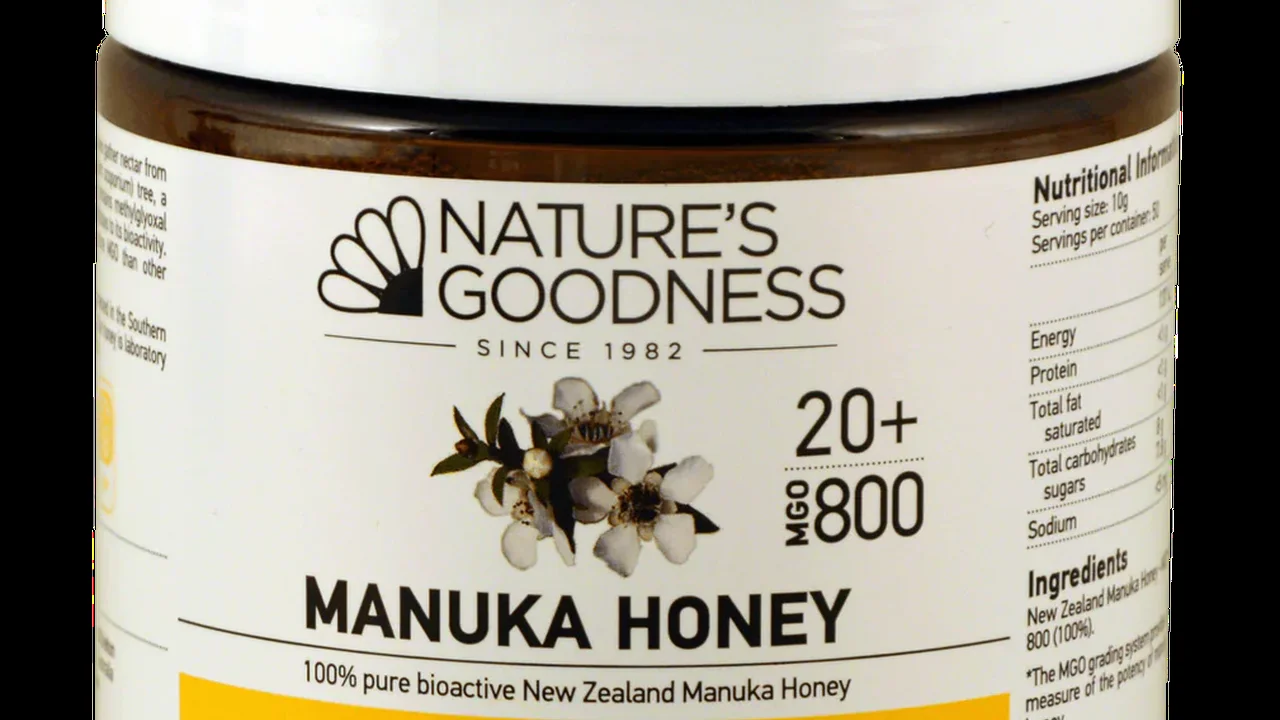New Zealand Honey: A Guide to Manuka and More
Sample meta description.

Discover the Liquid Gold Manuka Honey Explained
So, you've heard about Manuka honey, the superstar of New Zealand's natural treasures? It's more than just a sweet treat; it's a powerhouse of goodness, known for its unique properties. But what exactly is Manuka honey, and why is everyone buzzing about it? Let's dive in!
Manuka honey comes from the nectar of the Manuka tree (Leptospermum scoparium), native to New Zealand. Bees diligently collect this nectar, transforming it into honey with special enzymes. What makes Manuka honey special is the presence of Methylglyoxal (MGO), a naturally occurring compound responsible for its unique antibacterial activity. The higher the MGO, the more potent the honey.
Understanding UMF and MGO Ratings Choosing Your Manuka Honey
Navigating the world of Manuka honey can feel like deciphering a secret code. You'll see labels with UMF (Unique Manuka Factor) and MGO ratings. These are your guides to understanding the honey's quality and potency.
UMF: This is a quality trademark that assesses various factors, including MGO, Leptosperin, and DHA. A UMF of 10+ is generally considered to be a good starting point for therapeutic benefits.
MGO: This directly measures the amount of Methylglyoxal in the honey. For example, MGO 100+ means there's at least 100mg of MGO per kilogram of honey. Higher MGO = higher potency.
So, which rating should you look for? It depends on your needs. For everyday use and general well-being, a lower UMF or MGO might suffice. For more targeted support, like soothing a sore throat or supporting wound healing, a higher rating is recommended. Don't just go for the highest number - consider the value for money and your specific needs.
Beyond Manuka Exploring Other New Zealand Honeys
While Manuka honey gets all the attention, New Zealand boasts a diverse range of other delicious and beneficial honeys. Think of it as a honey rainbow, each with its own unique flavor and properties.
Rewarewa Honey: This honey has a distinctive reddish hue and a rich, malty flavor. It's known for its antioxidant properties and smooth texture.
Kamahi Honey: A light and creamy honey with a delicate floral flavor. It's a great all-rounder for everyday use.
Tawari Honey: A rare and exquisite honey with a subtle, almost citrusy flavor. It's highly prized for its unique taste profile.
Clover Honey: A very common honey, lighter in colour with a subtle sweetness. This is a great entry level honey for everyday use.
Manuka Honey Products Recommendations Uses and Pricing
Okay, let's get down to the specifics. Here are a few Manuka honey products to consider, along with their uses and estimated prices (prices can vary depending on the retailer and location!):
Comvita UMF 10+ Manuka Honey: A popular and reliable choice for general well-being. Use it in your tea, on toast, or straight from the spoon. Estimated Price: $30-$40 for 250g. Great for daily use.
Manuka Health MGO 400+ Manuka Honey: A mid-range option with a good level of MGO. Ideal for soothing a sore throat or supporting digestive health. Estimated Price: $50-$60 for 250g. Great for soothing sore throats.
Wedderspoon Raw Manuka Honey KFactor 16: This raw honey is unpasteurized and minimally processed, preserving its natural goodness. Estimated Price: $45-$55 for 250g. Great for those who want raw honey.
Wild Cape UMF 20+ Manuka Honey: A higher-grade Manuka honey, known for its potent antibacterial properties. Consider this for more targeted health support. Estimated Price: $80-$100 for 250g. This is a premium high strength honey.
Manuka Honey Lozenges (Various Brands): Convenient and effective for soothing a scratchy throat on the go. Look for brands with a decent UMF or MGO rating. Estimated Price: $10-$15 per pack. Great for on the go.
Using Honey for Skincare Applications
Did you know honey isn't just good for eating? It's also a fantastic ingredient for skincare. The humectant properties draw moisture to the skin, keeping it hydrated and plump. Manuka honey, with its antibacterial properties, is particularly beneficial for acne-prone skin. You can use it as a face mask, spot treatment, or even add a little to your favorite cleanser.
DIY Manuka Honey Face Mask: Simply apply a thin layer of raw Manuka honey to your clean face, leave it on for 15-20 minutes, and rinse with warm water. Your skin will feel soft, smooth, and refreshed.
Manuka Honey Spot Treatment: Dab a small amount of Manuka honey directly onto blemishes to help reduce inflammation and promote healing.
Comparing Manuka and Regular Honey Whats the Difference
While all honey is sweet, Manuka honey stands out from regular honey due to its unique properties. The key difference lies in the presence of Methylglyoxal (MGO). Manuka honey has significantly higher levels of MGO compared to regular honey, giving it its potent antibacterial activity.
Regular honey is still a great natural sweetener and can provide some health benefits, but it doesn't have the same level of therapeutic properties as Manuka honey. Think of it this way: regular honey is like a good multivitamin, while Manuka honey is like a targeted supplement for specific health concerns.
Storing Your Honey Properly Preserving its Goodness
To keep your honey at its best, store it in a cool, dark place away from direct sunlight. Honey is naturally hygroscopic, meaning it absorbs moisture from the air. To prevent it from becoming too runny, make sure the lid is tightly sealed. If your honey crystallizes (which is a natural process), simply warm it gently in a water bath to return it to its liquid state.
Keep your honey in the original container if it is glass or food grade plastic. Avoid keeping it in metal containers.
Enjoying Honey in Various Recipes Sweet Treats and Savory Dishes
Honey isn't just for toast and tea! It's a versatile ingredient that can be used in a wide variety of recipes, both sweet and savory. Drizzle it over roasted vegetables, use it as a glaze for meats, or add it to your favorite smoothie for a touch of sweetness. The possibilities are endless! Use it instead of sugar in baking for a healthier alternative.
Honey-Glazed Salmon: Combine honey, soy sauce, ginger, and garlic to create a delicious glaze for salmon. Bake or pan-fry the salmon until cooked through, and enjoy!
Honey-Mustard Chicken: Mix honey, Dijon mustard, and a touch of lemon juice to create a flavorful marinade for chicken. Grill, bake, or pan-fry the chicken until cooked through.
The Future of Honey Sustainable Practices and Innovation
The honey industry is constantly evolving, with a growing focus on sustainable practices and innovation. Beekeepers are working to protect bee populations, promote biodiversity, and minimize their environmental impact. Researchers are exploring new ways to harness the power of honey for health and wellness.
Look for honey from beekeepers who prioritize ethical and sustainable practices. Support local beekeepers whenever possible, and learn more about the importance of bees and their role in our ecosystem.
:max_bytes(150000):strip_icc()/277019-baked-pork-chops-with-cream-of-mushroom-soup-DDMFS-beauty-4x3-BG-7505-5762b731cf30447d9cbbbbbf387beafa.jpg)






